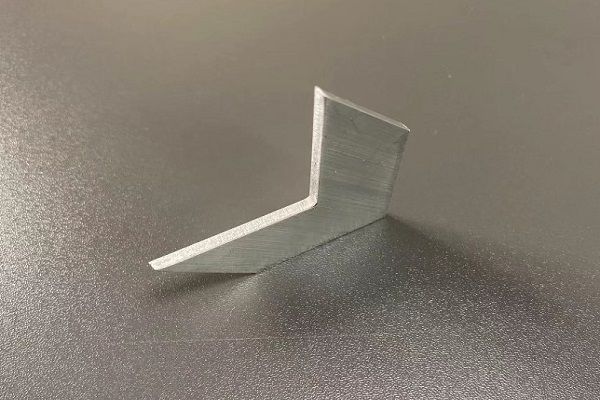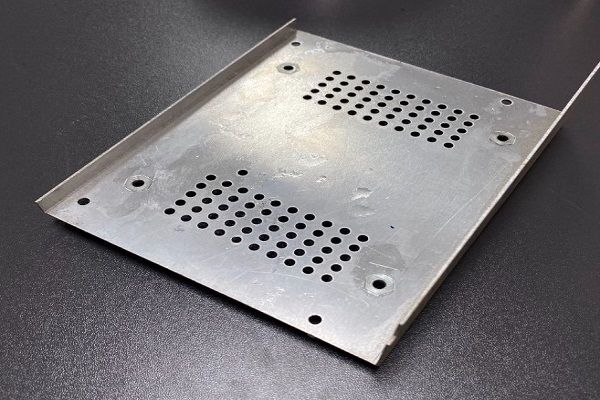
As a highly versatile material, aluminum is widely used in many industries. Its lightweight, high strength, and corrosion resistance make it an excellent choice for stamping. In the automotive, aerospace, and electronics industries, aluminum stamping is an efficient way to produce components ranging from simple brackets to complex components.
We'll examine aluminum stamping, including its advantages, applications, and manufacturing process, in this article.
Aluminum's advantages for stamping
Aluminum stamping has several advantages over other materials. First of all, aluminum is lightweight, which makes it ideal for aerospace and automotive applications where weight is extremely important.
Secondly, aluminum has a high strength-to-weight ratio, so it can withstand significant stresses and loads without adding unnecessary weight. This makes it an excellent choice for structural components, like chassis and body panels.
The corrosion resistance of aluminum makes it a good choice for outdoor and marine applications; its resistance to corrosion also makes it a good choice for parts that are exposed to harsh chemicals or extreme temperatures.
Aluminum stamping applications
There are a wide range of industries and applications for aluminum stamping. Here are some of the most common uses:
A wide range of automotive parts are made using aluminum stamping, including body panels, engine mounts, brackets, and heat shields.
Parts for aircraft: Aluminum is a common material in the aerospace industry, where its lightweight and strength make it useful for wings, fuselages, and engines.
The aluminum stamping process is used to manufacture enclosures, heat sinks, and brackets for electronic devices.
Building and construction: aluminum stamping is used to make window frames, door frames, and roofing panels.
Aluminum Stamping Manufacturing Process
Aluminum stamping involves several steps, including material selection, tool design, stamping, and finishing.
Selection of materials
The first step in the process is to select the appropriate aluminum material based on strength, corrosion resistance, and surface finish requirements.
Design of tools
When the material has been selected, the next step is to design the stamping tool. This tool, which is usually made from high-strength steel, creates the shape and features of the part that are desired. Tools are typically designed using computer-aided design (CAD) software, which is then machined using CNC equipment.
The stamping process
The stamping process involves feeding the sheet of aluminum into the stamping tool, which then cuts and forms the material into the desired shape. Various stamping methods can be used, including progressive stamping, transfer stamping, and deep drawing.
The final step
A part may undergo further finishing operations after stamping, including deburring, polishing, coating, and heat treatment, in order to improve its appearance or properties.
In conclusion
Using aluminum stamping, you can produce lightweight, strong, and corrosion-resistant parts at a reasonable cost. From simple brackets to complex components used in critical applications, aluminum is a versatile metal that can be used for a wide range of applications.

Materials, tool design, stamping, and finishing are among the steps involved in the aluminum stamping process. In order to ensure that your parts meet your specific requirements and perform as intended, you should work with a supplier with experience in aluminum stamping.
However, there are some limitations to Aluminum For Stamping. While aluminum is highly customizable, it may not be suitable for some applications that require extreme strength or high-temperature resistance. Manufacturers may need to consider other materials such as steel or titanium in these cases.
Those who need to produce complex, high-quality parts with tight tolerances can benefit greatly from aluminum stamping. In addition to being cost-effective and versatile, it is also efficient, durable, and corrosion-resistant. Working with an experienced supplier who can assist you in selecting the right material and designing the stamping tools to meet your specific needs is important when it comes to manufacturing processes.
Wednesday, August 30, 2023 3
Wednesday, May 17, 2023 1
- 2:37am bernardviolette7:
ADA signage can be customized to match the overall design and branding of a building. Signs can be made from a range of materials, including metal, acrylic, and plastic, and can be designed to complement the color scheme and style of the property. It's important to work with a reputable and experienced sign company when creating ada signage buy here. The company BSign can provide guidance on design and material selection, as well as ensure that the signs meet local building codes and regulations!
A couple of months ago, I tried to find a site where you can order an aluminum alloy ingot. I spent a lot of money and energy without finding a reliable store. Fortunately, my friend decided to help me and advised me to look at the aluminum ingot price. At first, I was quite skeptical about his advice, but I still decided to listen and did not regret it, because on this site I was able to find exactly what I had been looking for for so long.
Discovery Plus has become my preferred streaming service for its diverse and engaging content. The platform brings together an extensive collection of channels and shows, spanning genres from nature and science to lifestyle and true crime. The ad-free option and the ability to access exclusive content make it a compelling choice for entertainment enthusiasts https://discovery-plus.pissedconsumer.com/customer-service.html . Discovery Plus has successfully carved its niche by curating content that appeals to a broad audience, making it a valuable addition to any streaming lineup.
What strategies or approaches do you use when searching for specific products or services on the Internet? I have trouble finding certain products and would like to know how other people successfully find the things they need.